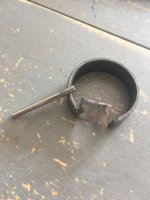wherearewe
Rub on Ya Titties
Hey guys. Anyone out there ever replaced the inner bushing on a fork lower (the teflon coated one)? Got a nicely polished lower that has a bushing where the teflon looks a bit worn. There has to be a better way than shopping around for an entire replacement lower and discarding an otherwise good part - I've done that before.
Some research says this might work, but I can't find much confirmation outside a couple of posts here and there...
http://sideburnmag.blogspot.co.nz/2013/06/mystery-part.html?m=1
cheers
Some research says this might work, but I can't find much confirmation outside a couple of posts here and there...
http://sideburnmag.blogspot.co.nz/2013/06/mystery-part.html?m=1
cheers


